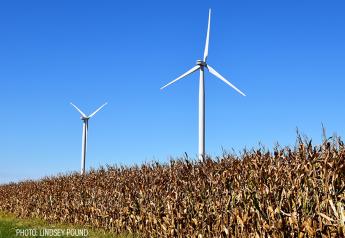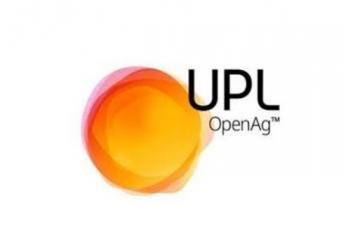Researchers Say Drip Irrigation Nets Higher Yields

Research from University of Missouri Extension finds subsurface irrigation as part of an integrated drainage water management system boosts corn yields by 41 bu. per acre and up to 14 bu. for soybeans on poorly drained flat soils.
In 2016, MU Extension agronomist Rusty Lee trenched and buried drip tape, 5/8" diameter plastic tubing, and PVC pipe. The pipe feeds water to the tape via pressure and flush manifolds. Water from a well passes through a disk filtration system.
In addition to the yield boost, kernel size increased, test weight improved and root systems of plants reached deeper on irrigated ground.
The cost of subsurface irrigation is similar to pivot systems, but drip irrigation offers more flexibility in small, irregular-shaped and sloping fields, and it reaches corners of fields. Drip irrigation doesn’t wet leaves and results in fewer foliar diseases. Farmers can zone drip irrigation to specific areas of a field. It doesn’t require large pumps and wells, and it uses less energy than pivot irrigation. Crops respond well to nitrogen fertilizer applied through drip irrigation.
There are drawbacks to drip irrigation, Lee says. The system must last more than 10 years to recoup initial installation costs. Lee’s research shows most do. Rodents can chew through drip lines, but Lee says it only takes five minutes to make repairs after finding the source of the leak.
Moving Beyond Manual Irrigation Management
The ability to precisely and remotely monitor and control irrigation systems has been beneficial for many farms. Here’s a rundown of recent software advancements that enhance management functions.
Lindsay has made enhancements to its FieldNet system and now offers FieldNet Advisor. After entering field details, FieldNet Advisor tracks available soil water using soil map, crop canopy and root growth models and local weather data. A high-resolution map shows the amount of water available to the crop. The system forecasts the crop’s future water needs and predicts when and where yield will begin to decline without added water or irrigation. FieldNet Advisor generates a variable-rate irrigation prescription and can be integrated into FieldNet’s remote monitoring and control platform. The dashboard gives farmers a view of all pivots.
Another addition to the Lindsay line is the Pivot Control Lite. The lower-cost option doesn’t include remote start, but it does offer a range of monitoring functions. The end-of-pivot mounted controller allows a farmer to remotely check pivot status from a smartphone, tablet or computer, receive alerts if operations change, adjust application depth, reverse or stop the pivot, control the end gun and run variable-rate plans. Pivot Control Lite can consolidate different brands onto one interface.
Reinke introduces RC10, a remote monitoring device that offers advanced control features such as sector, end gun and auxiliary programming. The device is the latest addition to the ReinCloud platform, which allows farmers to manage and monitor irrigation systems, analyze soil moisture data, check the weather and more from a mobile app. RC10 is housed in a tower box and can be mounted at the main control or end of the system. The device is compatible with most irrigation systems.
New technology from Smart Farm Systems allows farmers to remotely monitor field conditions and control well pumps. The software and wireless network team up with integrated soil, flow and water-level moisture sensors and control modules to provide real-time, actionable information on local weather, equipment and soil moisture. The base station serves as the hub for processing and the mobile app puts data at the farmer’s fingertips. Smart Farm Systems can be retrofitted on existing units.







